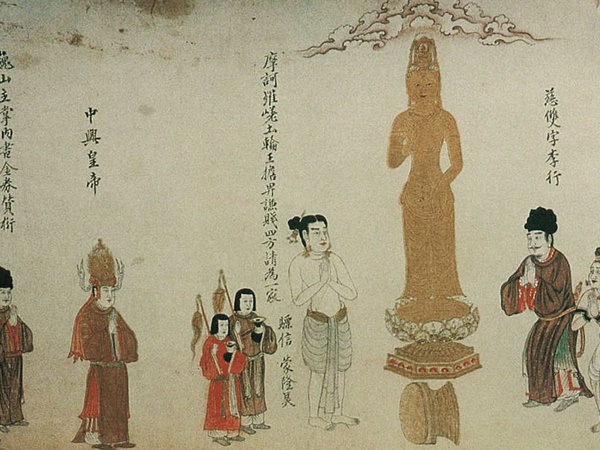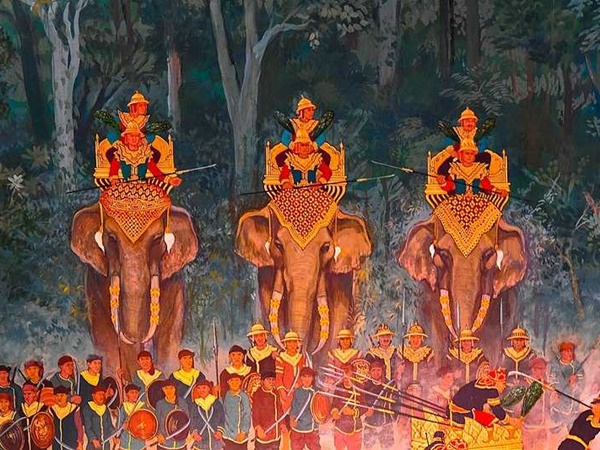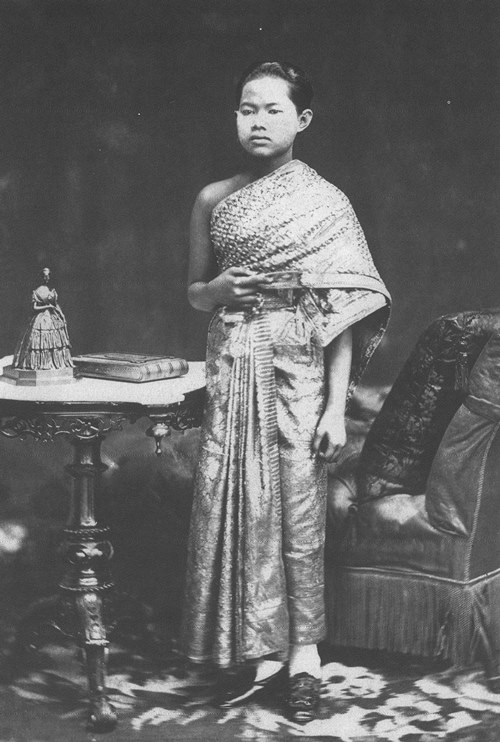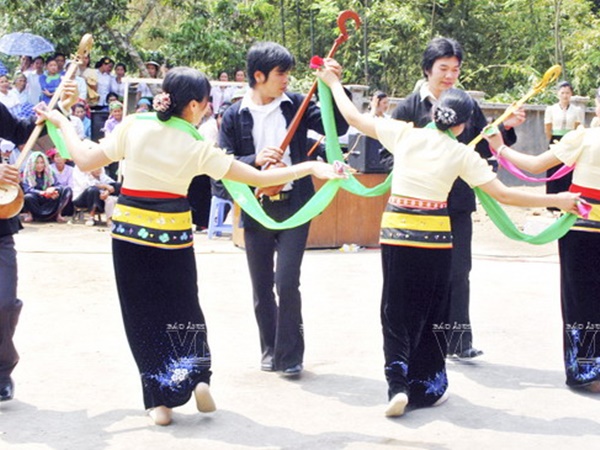The Thai people have a fate full of ups and downs and are also the most interesting in the flow of human history. From a small country in the mountains of southern China, the Thai people have spread and taken over the fertile land of Southeast Asia. Below is a brief history of Thai people in Southeast Asia.
1. Who are Thai people?
Thai people, also known as Siamese. This is the majority group living in Thailand, Laos and a ethnic minorities in Vietnam, Myanmar, India and southern China.
Historical researchers divide the South East Asian race into five distinct groups as follows: Mon-Khmer group, Viet-Muong group, Tay-Thai group and Hmong-Dzao group and the Southern islands group (Cham, Gia Rai, Ede). So the Tay &Thai people has a common origin.
2. Origin of the Thai

Nanchao Kingdom in ancient painting
Based on genetic evidence, Jerold A. Edmondson suggests that the ancestors of the Tai-Kadai-speaking inhabitants migrated from India to Myanmar, and then to Yunnan (China) about 20,000 - 30,000 years ago. From there they reached northeastern Thailand and then migrated along the South China Sea coast to the mouth of the Yangtze River, near Shanghai, about 8-10 thousand years ago. During the period of the Nanchao and Dali kingdoms, from the 8th to the 13th century, and thereafter, they have since conquered Thailand and Laos. However, his above evidence was rejected because there were no evidence that Thai people who migrated back to the Yangtze River.
According to David Wyatt, in his book "Thailand: A short history", the Thai people originated from southern China, having the same origin as today's minority groups such as the Zhuang, Tay. Under pressure from the Han and the Vietnamese in the north and east, the Thai gradually migrated to the south and southwest. Thai people migrated to Vietnam during the period from the 7th to the 13th century. The center of Thai Civil at that time was Dien Bien Phu (Vietnam). From here, they spread all over Southeast Asia at the same time as Laos, Thailand, Shan State in Burma and some parts of northeastern India as well as southern Yunnan. This favored hypothesis of major historians.
3. How did Thai people take over Southeast Asia?

The Thai soldier in Angkor Empire
Located in the provinces of Guangdong and Guangxi, The Tay Au was the kingdom of the ancient Tay and Thai people (the ancestors of the present-day Thai people). It was in this place that Thuc Phan united the tribes before annexing Van Lang. Thuc Phan later ascended the throne in Co Loa, Dong Anh, became the An Duong Vuong king.
When the kingdom of An Duong Vuong were annexed by Trieu Da, all the ancient Thais who remained in the Northeast mountains became the Tay minority in Vietnam. The other ancient Tai people, they fled to Yunnan and in the 8th century together they founded the Nanzhao Kingdom and later became the Dali state, adopting Tantric Buddhism as the state religion.
According to Thai historical documents found in Vietnam, there were three important migrations of the Thai population in Yunnan into northwest Vietnam. That was the period when the Kingdom of Nanzhao was annexed by Dali in the 9th century and Daili in turn was destroyed by the Mongols of Kublai Khan, grandson of Gengis Khan in the 11th century. It was the war that caused the Thai people to spread throughout Indochina as it is today.
Thai people have the custom of settling near water sources, in valleys with many streams or large rivers. Therefore, the ancient Thai people were divided into many groups: the Thai group in Vietnam, the Thai group in Burma (often called the Shan people), the Thai group in Laos and the Thai group in the north of present-day Thailand. Each group began to follow the religion of the countries in which they were resident. Except for the group of Thai in Vietnam who continue to worship polytheism, Thais in Laos and Thailand follow Theravada Buddhism.
4. The role of the Thai people in Southeast Asian history

A Siamese princess in early 20th century
Taking advantage of the exhaustion of the Angkor empire through endless wars with neighboring countries and the construction of great temples, the Thais, who lived under Khmer rule in the role of mercenaries hires and craftsmen, rebelling for independence. They captured most of territory is now Thailand and Laos.
In the northern part of the Ménam River basin of Thailand, two Thai chieftains named Po Khun Bangklanghao and Po Khun Phameung stood up to repel the Khmer and Mon and succeeded in liberating Sukhothai in 1239. Po Khun Bangklanghao became the first king of an independent Thai kingdom with the name Sukhothai which means the beginning of happiness. His second son, Rama Khamheng (commonly known as Ramkhamhaeng the Great) was credited with expanding the territory by annexing not only the northern regions of Malaysia but also the region of the Khmer Empire near Luang Prabang (Laos).
At the same time in northern Thailand, after annexing Haripunjaya in 1292, an allied leader named Mengrai established the kingdom of Lanna (meaning kingdom of a million rice fields) and made its capital at Chiang Mai. From now on, Rama Khamheng and Mengrai split to rule, one in the central part and the other in the north of Thailand.
In Burma, the Pagan kingdom could not withstand the invasion of the Mongol army, so the Thai people in Burma (the Shan people) took the opportunity to disintegrate the kingdom and set up many shan kingdoms, the largest of which was kingdom in the Inle Lake region.
In Vietnam, the Thai people mainly live in the valleys in the northern mountainous region and have gained autonomy since the 13th century. The Thai people do not confront the central Vietnamese government, but use diplomacy and economic independence to maintain political independence. Since then, Thai people have been less influenced by Vietnamese culture and politics.
Today, Thailand and Laos have become the countries where the Thai people are the majority and hold the leadership, thereby developing cultural and linguistic identities. In Myanmar and Vietnam, the Thai people live in remote mountainous areas and are gradually reduced from power and cultural identity by the central government.
5. Thai social form

Thai people in Vietnam
Muong is the core basis of Thai social, political and religious organization. Muong can be small or large depending on the size and importance factor. But there is always at the center a muong called Muong Luong to which all other muong must submit. Each muong consists of many villages, each of which is governed by a board of directors made up of people of high status in the village (the moat) and has between 40 and 50 houses, sometimes up to 100. Like the Vietnamese, the Thai people often build villages and muong in alluvial lands or areas where rivers or canals are convenient for growing rice, moving and exchanging goods with other Muong.